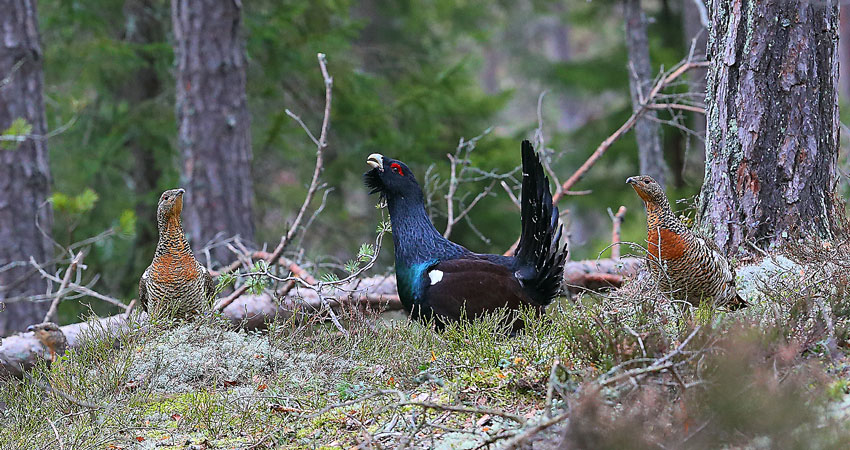 Foto: Svante Joelson
Foto: Svante JoelsonWildlife
In the hilly forest landscape live the forest animals, in the shelter of spruce and pine trees. The mammals are difficult to see, but the birds are more evident.
Birds
Tyresta is often described as the realm of owls and woodpeckers. There are also numerous wood grouse here, although they are well-hidden in the forest. Easier to spot is the black woodpecker, our largest woodpecker. Clearly most common are the robin, willow warbler and the chaffinch; but more uncommon species such as the lesser spotted woodpecker, three-toed woodpecker, wood grouse and spotted nutcracker are also present. With a little luck the tawny owl, eagle owl and Eurasian pygmy owl can be heard in the area. In the lakes can be heard the Arctic loon’s distinctive call.
Mammals
Traces of elks, roe deer, squirrels, foxes and hares are often seen in winter. Signs of the nocturnally active marten are also sometimes visible; it may leave footprints on fallen tree trunks, or mark its presence with droppings on a stone or tree stump. A powerful and very fortunate experience would be to see a lynx, which is often reported in the area.
During the 2000s, sizeable numbers of beaver and wild boar have established themselves. Beavers are present in all the lakes; their dams and tree-gnawing are clearly visible. Wild boar search for roots, fungi, seeds and insects in the ground. Their rooting turns the ground over substantially and can be seen from far off.
Insects
The large quantity of dead wood, not least in the area of the 1999 forest fire, contains many wood beetles, including the long-horned beetle.
Reptiles
In the watercourses live salamanders, frogs and toads; other reptiles that can often be seen are grass snakes and vipers. Most of the vipers at Tyresta have the typical zig-zag markings of the species, but it also occurs in a completely black form. The more uncommon smooth snake has also been reported a few times.
Fish
The fish in the lakes are mainly perch, pike and roach; in Stensjön Lake there are also vendace. The Åva River has a resident population of spawning sea trout.
Share with your friends
Share this page with your friends on Facebook, X (formerly Twitter), Google+ and e-mail.





